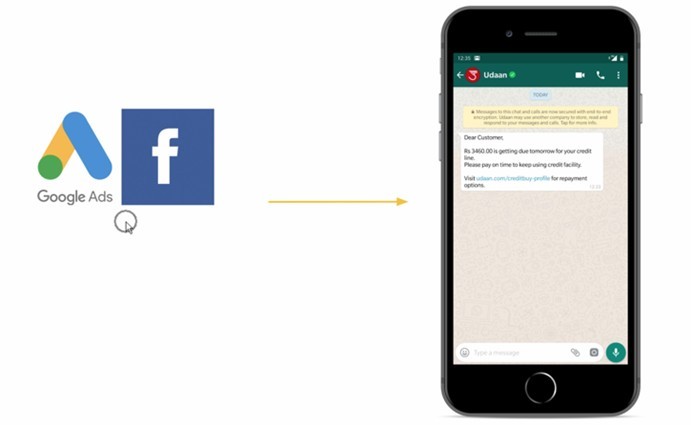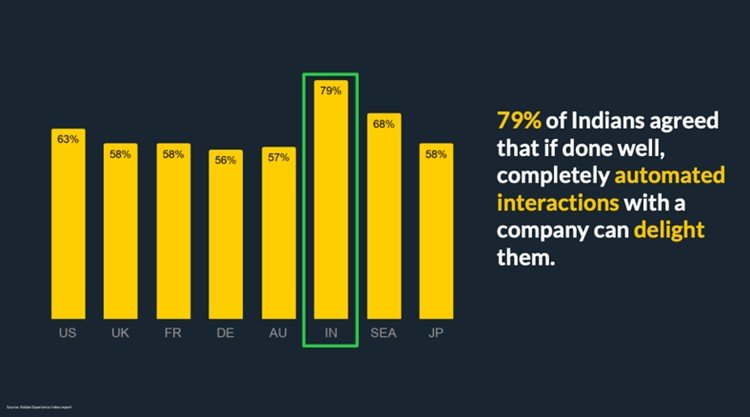The CMO's role in companies has changed over the years—from being brand-focused to being ROI-focused. All marketers have been affected by the repercussions.
The world over, in the C-suite CMOs are the fastest to be let go. Why? Because they have the hardest time proving the positive impact and ROI that Marketing spend has had on the business.
If we were to look at performance marketing from the lens of a CEO, it boils down to just two things:
- The quality of leads marketing team brings in
- The revenue contribution of those leads to the organization
So, although a 20% email open rate would be a big deal for marketers, a CFO might ask, "So what?" As a marketing leader, you need to shift the focus from marketing metrics to strategic KPIs. Let the conversation be not of open rates, but of increasing average order value. Let the conversation be not about 5% conversion rate KPIs but about 25% more engaged customers.
Under pressure to get internal team members on board with marketing strategies, battle the competition, generate higher ROI, and scale quickly, marketing leaders could use some help. Enter conversational AI (artificial intelligence) automation—your soon-to-be best friend.
In fact, Gartner predicts that as soon as 2020, 40% of users in certain B2B verticals will be primarily interacting with new applications that support conversational user interfaces with AI. That number should act as a push to all marketers.
Three Ways Conversational AI Can Help Marketers Deliver Leads and Conversions
1. Conversational Ads
The total amount of money spent on digital ads has been rising over the years, even though the rate of increase has fallen slightly. E-marketer predicts that the global ad spends will cross $375 billion by 2021.
And the current system of a prospect's seeing an ad, clicking on the ad, coming to a landing page, engaging with the brand, and converting... is broken. It's asynchronous and not engaging.
The system of the future is of a prospect's interacting in real-time with an ad banner, entering details about interest in products, getting a personalized product suggestion seamlessly on the Web (chatbot), phone (IVR), and app (WhatsApp).

The system of the future is very much here. Marketers can qualify and engage with leads on the go. Imagine a world where there are no leads—only pre-qualified leads. Wouldn't that be amazing?
With Google and Facebook commanding over 57% of digital marketing budgets, there is a big gap to be filled with conversational banner bots. These bots can converse with a prospect—on the webpage they've seen the ad on. No more distractions, no more narrowing funnel.
2. Real-Time Engagement
Where do your customers go when they click on a Facebook or Google ad? An optimized landing page? What happens next? The average click-through rate of digital ads is 2%. And the pressure of lead capture and ROI is all pegged on that 2% of prospective customers.
What if you could automatically start conversing with these 2% of prospective buyers? Would that make your sale easier? Leveraging conversational AI chatbots on WhatsApp, you can connect with leads, convert them into MQLs, SQLs, and eventually into customers, automatically. Marketers can use WhatsApp business APIs and use WhatsApp as the landing page for any Google, Facebook, or QR code advertising.

3. Insightful Sales
Marketers are slow to act on behavioral user data because they're using mostly older technologies to drive consumer segmentation. Marketers also believe that companies are still struggling to translate the collected behavioral data into better, more customized user experiences.
With conversational AI chatbots you can charge at that strategic KPI of increasing average order value by knowing more about them before they even know you.

From collating insights via data-rich platforms like Facebook, Instagram, and Google to offering the best products from your suite, your AI-powered chatbots are at the cross-section of delivering value both to customers and to businesses.
Adoption of Conversational AI Chatbots Is Key If You're in These Markets
According to Adobe Experience Index 2019, consumers in India, followed by those in Southeast Asia, with the US not far behind, are most likely to be delighted by automated interactions:

This is a clear indication for enterprises to match up with customer expectations—and soon. But the question is, What can chatbots do that the current systems cannot? The answer is that one need not replace systems but, rather, leverage new technology to offer a seamless experience.
Consumers are more critical when things are broken or don't meet their expectations. Using intelligent digital assistants, you can automate close to 80% of customer interactions, delivering a consistent and quick resolution; and when the digital assistant cannot solve a problem, it seamlessly transfers the query to a human agent.
So why choose when you can enjoy the best of both worlds? But, before that...
Four Things to Look for in Your Chatbot Company
Now that you know what automation can do for your enterprise marketing and also are aware of what your customers are looking for, the next big question is what makes a good Chatbot?
1. Robust Natural-Language Processing (NLP)
Your digital assistant chatbot is only as good as its ability to understand and respond. If you don't invest in a chatbot that is built on robust libraries, there's little chance that it'll delight your customers. In fact, it can be counterproductive to the whole idea of assisting marketing via automation.
Ensure that your Digital Assistant can be configured and trained easily and has a lot of past knowledge from interactions across customer types and countries even. Keras and TensorFlow NLP libraries are designed to deliver personalized and configurable responses.
2. Enterprise-Ready
When implementing new technologies, it's hard to change existing systems, processes, and deployments. Automation should aid your existing systems to become more efficient versus becoming a bottleneck for the change agent. It's important to ensure your digital assistant product is pre-integrated with the backend systems you're using.
Some of the popular backend systems that your enterprise may be using could be SAP, BMC Ready, Microsoft Active, Azure Active, GitHub, and One Login. Along with your digital transformation team, make a list of back-end integrations that you'd want the digital assistant to be pally with.
3. Omnichannel
Your customers are everywhere. They're perhaps even interacting with four screens at a time. As an enterprise, in the customer-is-king world you should have the flexibility to extend your digital assistants across the Web, WhatsApp, Slack, Twitter, Google Home, Amazon Alexa, and more.
Pick a digital assistant that's omnichannel. Because your customers sure are.
4. Secure and Compliant
Security and compliance are of utmost importance to an enterprise. Many organizations are comfortable with SaaS and Cloud deployments, while many insist on on-premise deployments. Before choosing a digital assistant, understand what their integration models are and, more so, whether their regulations are compliant with the country of your operations.
* * *
And, with that, you're ready to start hunting for the perfect digital assistant platform for your enterprise.




